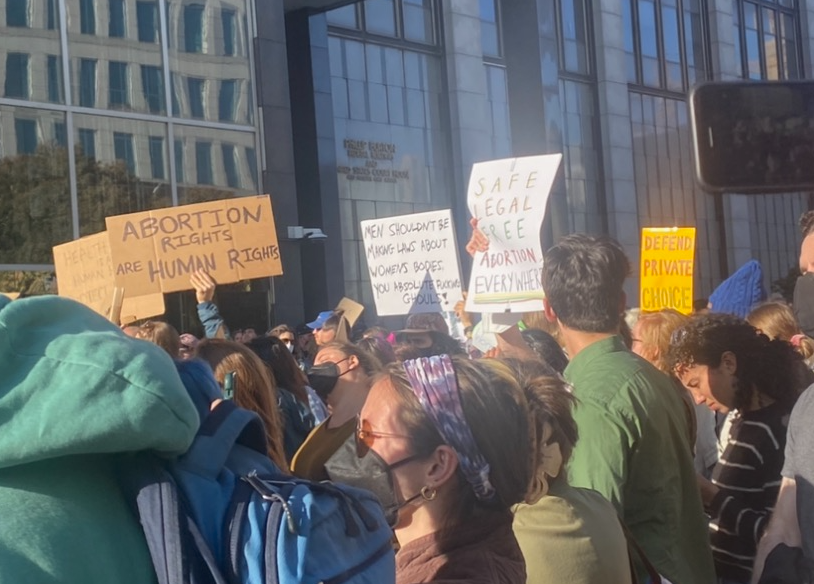Tam Students protest against climate change and for abortion rights
Jun 7, 2022
Protesters gathered in San Francisco’s Civic Center district for two separate demonstrations on April 22: A Climate Strike for Earth Day and protest in response to Supreme Court Justice Samuel Alito’s leaked draft outlining a potential overturn of the Court’s Roe v. Wade ruling.
The first protest, led primarily by young demonstrators, reflected demands for climate action, while the latter was fueled by multigenerational outrage at the prospect of the loss of American women’s legal right to safe abortion.
Those in attendance included Tam juniors Siobhan King, Dylan Palmer, and Gigi Shulman.
“[The protest] focused mainly on the effects that we have on climate change and global warming and the way that we treat our planet and the results that we get from that,” Shulman said.
Students sacrificed their school attendance to participate in the protests, which were held in the middle of the school day. “It’s not just like you posting on your Instagram story, but you’re actually leaving school, going to the city, marching down Market Street, like people can’t help but listen and hear you,” King said. “I feel like youth strikes, like school strikes, are a very good way to get our message across and really make a point and make people hear you.”
As King sees it, much of climate change denial stems from willful ignorance and a desire to escape responsibility for the well-being of the planet. “I just want to take care of my planet and it really frustrates me to see people ignoring this issue that greatly impacts everyone and people just act like it doesn’t exist, and doing that is not going to stop it from continuing to happen,” King said.
According to the student protestors, acts of civil disobedience are required to make elected officials responsive to the grievances of the public. “I think sometimes you have to do more drastic things, like marching down a main street in the city, in order for people to hear you and in order for people to not be able to just walk away and not pay attention,” King said. “It’s a matter of forcing people to face the issue.”
Junior Cadence Evans attended the demonstration of reproductive rights along with King and reflected on the difference between protests related to ongoing issues like climate action and demonstrations catalyzed by a specific turn of events such as Alito’s leaked draft.
“[The pro-choice protest] was angry. It was an impromptu, reactionary rally, but word got out very fast that they were going to have some sort of demonstration,” Evans said. According to Evans, the response to Roe’s possible overturn was a “unifying experience of anger,” one that “brought us together [as] a lot of people felt personally attacked by the decision of the Supreme Court, they felt their rights had been stripped and they were pissed.”
For Evans, these recent public demonstrations draw inspiration from those that came out of the wave of student protests in the 1960s and 1970s. “I think protesting is necessary because it is a demonstration of what the people want. It’s a way to prove that there’s still a democracy, it proves that there still is freedom of speech,” Evans said.
Kapan acknowledged the importance of civil disobedience and the significance of public demonstration but explained that it was not without its limitations. “[Protesting] is super valuable to get the word out about national opinion, to show outrage, and to bolster others and educate others,” Kapan said. However, she added, “On the scope of our national government, the government and the people who are in control— the GOP and the majority parties— they don’t care. And I don’t think that they are going to care.”
Despite varying perspectives on the impact of these protests, the demonstrators agreed the atmosphere itself was inspirational. “Seeing everybody come together as a community to talk about this was very inspiring and just makes me want to do better for my planet and for myself and the future of the world,” Shulman said. “That’s why I protest, because I want to be a part of the majority that wants to see the change and is dedicated to making that happen.”




